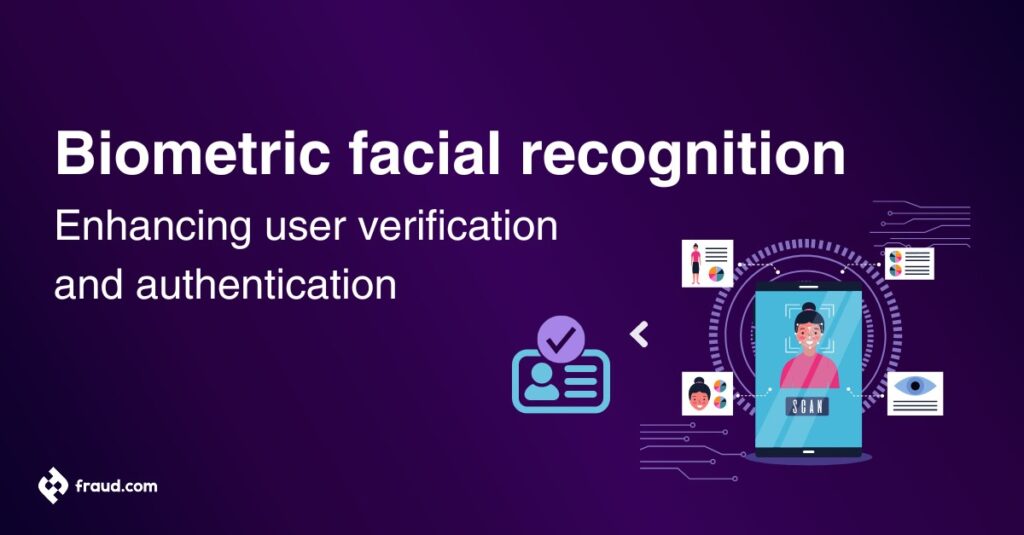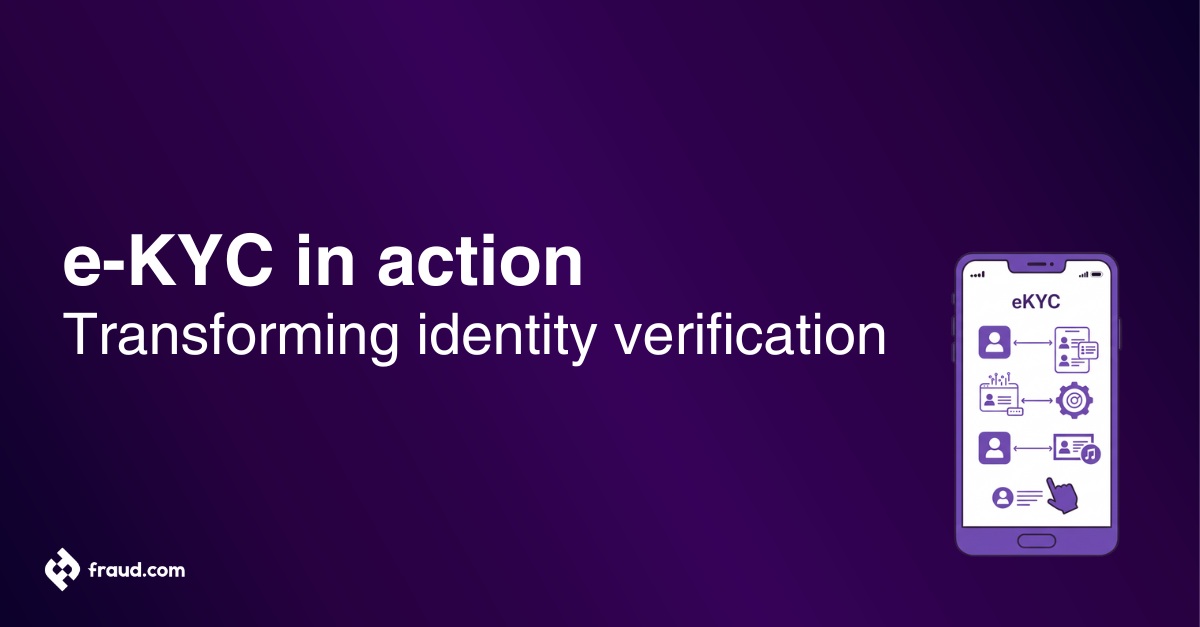In today’s digital world, ensuring that only the right people have access to sensitive information is crucial. Biometric facial recognition technology is leading the charge in this area, offering a simple yet secure way to verify identities and grant access. By using the unique features of people’s faces, this technology not only makes things safer but also smoother across different industries.
With biometric facial recognition, there’s no need to remember complex passwords or PINs. Instead, face recognition technology scans your face to confirm who you are, making the process both convenient and secure. As organizations focus more on protecting data and respecting privacy, biometric facial recognition is becoming a trusted tool for verifying identities and controlling access. In this article, we’ll explore how biometric facial recognition is making user identity verification and authentication easier while paving the way for a safer digital future.
Table of Contents
ToggleWhat is biometric facial recognition
Biometric facial recognition is a cutting-edge technology that uses facial features to confirm individuals’ identities. By analyzing unique characteristics such as the distance between the eyes, nose shape, and facial contours, this technology creates a digital representation of a person’s face, known as a biometric template. When a user attempts to access a system or facility, their face is scanned and compared against stored biometric templates to verify and authenticate their identity. Biometric face recognition systems adopt advanced algorithms and machine learning techniques to ensure accuracy and reliability in identifying individuals.
Why is biometric facial recognition important
Biometric facial recognition stands as a cornerstone in fortfying verification and authentication processes across diverse sectors. Unlike conventional methods such as passwords or PINs, which are susceptible to being forgotten, stolen, or shared, and used to commit fraud, biometric facial recognition presents a highly secure and user-friendly approach to verifying identities. This innovative technology eradicates the need for users to memorize intricate credentials, thus streamlining the biometric authentication process and mitigating the risk of unauthorized access, and frauds including identity theft and account takeover.
Moreover, biometric facial recognition significantly enhances user experience by creating a seamless and efficient means of access control. In a time when worries about fraud, data security, and privacy are escalating, biometric facial recognition presents itself as a reliable method for strengthening the protection of confidential data and guaranteeing that only those with approved access rights are allowed access. With its integration of advanced biometric identification techniques and sophisticated facial recognition algorithms, facial recognition software serves as a robust and trusted guardian of digital identities, safeguarding against potential fraud and breaches.
How does biometric facial recognition work
Biometric facial recognition technology operates through a series of processes designed to accurately authenticate individuals based on their facial characteristics. Let’s delve into each step:
- Face detection: Before any analysis can begin, the system must first locate and identify faces within an image or video frame. Specialized algorithms are employed to scan the input biometric data and pinpoint facial features with precision.
- Face alignment: Once a face is detected, the system aligns it to a standardized position, ensuring consistent orientation for subsequent analysis and comparison. This alignment step minimizes variations caused by differences in pose or angle.
- Feature extraction: Key facial features such as the eyes, nose, mouth, and jawline are meticulously extracted from the aligned face image. These features serve as the foundation for creating a unique biometric template that encapsulates the individual’s distinct facial characteristics.
- Template creation: Using the extracted facial features, the system generates a mathematical representation of the individual’s face, known as a biometric template. This template is carefully constructed to encode the essential traits necessary for accurate identification and is securely stored in a facial recognition database for future reference.
- Matching process: When a user seeks access to a system or facility, their face is scanned, and a new biometric template is swiftly created. This freshly captured template is then compared against the stored templates in the database to identify potential matches.
- Score calculation: To assess the similarity between the newly captured biometric template and the stored templates, the system computes a similarity score. A higher score indicates a closer match between the facial features, thus confirming the individual’s identity with greater certainty.
- Decision making: Based on the computed similarity score and predetermined thresholds, the system makes a decisive determination to either grant or deny access to the user. This decision hinges on the degree of resemblance between the captured facial features and the stored templates.
- Feedback and iteration: Feedback gleaned from the decision-making process is invaluable for refining the system’s algorithms. Through iterative refinement, the technology continually enhances its accuracy and reliability over time, adapting to evolving facial characteristics and environmental conditions.
Biometric facial recognition systems leverage sophisticated technologies to facilitate rapid and precise identification while upholding stringent standards of security and privacy.
Advantages of biometric facial recognition
Security and efficiency are paramount concerns for organizations across various industries and biometric facial recognition technology emerges as a powerful solution. Offering a seamless blend of security, convenience, and scalability. Biometric facial recognition provides numerous advantages over traditional authentication methods. Let’s explore the key benefits of this cutting-edge technology:
- Enhanced security: Biometric facial recognition provides a highly secure method of authentication, as it relies on unique facial features that are difficult to replicate or spoof.
- Convenience: Users do not need to remember passwords or carry physical tokens for authentication. Access is granted simply by presenting their face to the system, making the process fast and user-friendly.
- Accuracy: Facial recognition technology has advanced significantly, resulting in high levels of accuracy in identifying individuals. This reduces the risk of false positives or negatives compared to other authentication methods.
- Non-intrusive: Unlike fingerprint or iris scanning, which require physical contact or close proximity to the sensor, facial recognition can be performed at a distance, offering a non-intrusive means of authentication.
- Scalability: Biometric facial recognition systems can easily scale to accommodate large numbers of users without compromising on performance or security. This makes them suitable for deployment in a wide range of environments, from small businesses to large enterprises.
- Time efficiency: Authentication using facial recognition is typically faster than traditional methods, saving time for both users and administrators. This is especially beneficial in high-traffic areas where quick access is essential.
- Reduced fraud: With its robust authentication capabilities, biometric facial recognition helps reduce instances of fraud and identity theft. It provides a more reliable way to verify the identity of individuals, minimizing the risk of unauthorized access.
- Integration flexibility: Biometric facial recognition technology can be seamlessly integrated with existing security systems and applications, enhancing overall security posture without requiring major infrastructure changes.
- Remote access: In an increasingly remote work environment, biometric facial recognition offers a secure means of verifying identities for remote access to systems and resources, ensuring that only authorized users can access sensitive information.
- Compliance: Many industries are subject to regulatory requirements regarding data security and user authentication. Biometric facial recognition helps organizations comply with these regulations by providing a secure and reliable authentication method.
Applications of biometric facial recognition in various industries
Biometric facial recognition technology stands at the forefront of innovation, offering a versatile solution that transcends traditional boundaries and finds applications across a wide array of industries. Let’s explore how this cutting-edge technology is reshaping processes and enhancing security measures in diverse sectors:
- Retail: Within the retail sector, biometric facial recognition is leveraged to deliver personalized shopping experiences. By analyzing customer facial expressions and preferences, retailers can tailor marketing strategies and promotions to individual shoppers, thereby increasing engagement and driving sales. Additionally, facial recognition technology helps retailers mitigate theft by identifying known offenders and monitoring store traffic in real-time.
- Banking and finance: In banking and finance, security is of paramount importance. Biometric facial recognition provides a highly secure method of authentication, significantly reducing the risk of fraudulent activities such as identity theft and account takeover. Whether accessing online banking services, conducting transactions at ATMs, or verifying identities during in-person interactions, facial recognition technology streamlines customer verification processes while enhancing overall security.
- Healthcare: Within the healthcare industry, patient confidentiality and data security are critical concerns. Biometric facial recognition ensures secure access to electronic health records and medical facilities, safeguarding sensitive patient information from unauthorized access. Moreover, facial recognition technology assists in patient identification and tracking throughout healthcare facilities, streamlining administrative processes and improving the overall quality of care.
- Airports and transportation: Airports and transportation hubs are embracing biometric facial recognition to enhance passenger experience and improve security measures. From expedited check-in processes to seamless security screenings and border control procedures, facial recognition technology enhances efficiency while maintaining stringent security standards. By accurately identifying passengers and monitoring their movements, airports can optimize operations, reduce queues, and enhance the overall travel experience.
- Hospitality: In the hospitality industry, guest satisfaction is paramount. Biometric facial recognition technology is revolutionizing guest services by streamlining check-in processes, enhancing security within hotels and resorts, and personalizing the guest experience. By recognizing returning guests and accessing their preferences, hotels can deliver tailored services and amenities, fostering loyalty and driving guest satisfaction.
- Education: Educational institutions are harnessing the power of biometric facial recognition to enhance campus security and streamline administrative processes. By implementing facial recognition systems for secure access to campus facilities and student attendance tracking, schools and universities can ensure a safe and efficient learning environment for students and staff alike. Additionally, facial recognition technology enables accurate student identification, simplifying administrative tasks and improving overall campus management.
- Law enforcement: Law enforcement agencies rely on biometric facial recognition for criminal identification, suspect tracking, and public safety initiatives. By analyzing surveillance footage and matching facial images against databases of known criminals, facial recognition technology aids in locating missing persons, apprehending suspects, and preventing crimes. Moreover, facial recognition systems can identify people in large crowds or public spaces, enabling law enforcement authorities to respond quickly to emergencies and ensure public safety.
- Smart cities: Biometric facial recognition technology plays a crucial role in the development of smart cities, where data-driven technologies are used to optimize urban infrastructure and enhance quality of life for residents. By deploying facial recognition systems for public safety initiatives, traffic management, and urban planning, cities can improve security, reduce congestion, and enhance overall efficiency. Additionally, facial recognition technology enables efficient monitoring of public spaces and helps authorities identify and respond to potential security threats in real-time.
These applications exemplify the versatility and effectiveness of biometric facial recognition technology in addressing a diverse range of challenges and opportunities across various industries. As the technology continues to evolve and advance, its potential to transform processes, enhance security, and improve user experiences will only continue to grow.
Biometric facial recognition vs. other authentication methods
In the world of authentication methods, biometric facial recognition stands out as a powerful contender, offering unique advantages over traditional approaches. Let’s explore how biometric facial recognition compares to other authentication methods, including fingerprint biometrics and voice biometrics, considering both behavioral and physiological categories:
Behavioral biometrics:
- Keystroke dynamics: This method focuses on analyzing the unique rhythm and patterns in how individuals type on a keyboard. By scrutinizing factors like key press duration and typing speed, keystroke dynamics can authenticate users based on their typing behavior.
- Mouse/cursor dynamics: Examining the distinct movements and behaviors exhibited by individuals when interacting with a mouse or cursor. This approach analyzes factors such as movement speed, acceleration, and trajectory to verify users’ identities.
- Signature recognition: Using the distinct characteristics of individuals’ signatures for authentication. Signature recognition algorithms analyze factors such as stroke length, pressure, and speed to determine the authenticity of a signature.
- Voice recognition: Verifying identities by assessing the unique features and nuances present in individuals’ voices. Voice biometrics technology analyzes factors such as pitch, tone, and vocal patterns to authenticate users based on their voiceprints.
- Gait: Identifying individuals based on the distinctive patterns in their walking styles. Gait analysis algorithms examine factors such as stride length, cadence, and posture to authenticate users by their unique walking patterns.
- Lip motion: Analyzing the movement and characteristics of individuals’ lips for authentication purposes. Lip motion biometrics focus on factors such as lip shape, movement trajectory, and muscle dynamics to verify users’ identities.
Physiological biometrics:
- Face verification: Confirming identities by comparing facial features against stored templates. Face verification algorithms assess factors such as the distance between facial landmarks, skin texture, and facial symmetry to authenticate users’ identities.
- Face recognition: Identifying individuals by analyzing the unique characteristics present in their facial structures. Face recognition technology employs advanced algorithms to match facial features against a database of known faces, enabling accurate and reliable identification.
- Fingerprint: Fingerprint technology authenticates individuals based on the distinctive patterns present in their fingerprints. Biometric fingerprint authentication recognition systems analyze factors such as ridge patterns, minutiae points, and ridge density to verify users’ identities with high precision.
- Finger vein: Verifying identities by analyzing the vein patterns present in individuals’ fingers. Finger vein biometrics technology adopts near-infrared light to capture vein patterns beneath the skin’s surface, providing a secure and reliable method of authentication.
- Palm: Confirming identities based on the unique features present in individuals’ palms. Palm recognition algorithms assess factors such as palm geometry, vein patterns, and crease patterns to authenticate users’ identities accurately.
- Iris: Identifying individuals by analyzing the intricate patterns present in their irises. Iris recognition technology captures high-resolution images of the iris and analyzes factors such as iris texture, crypts, and furrows to authenticate users’ identities reliably.
- Retina: Verifying identities based on the unique patterns present in individuals’ retinas. Retinal scanning technology uses near-infrared light to capture detailed images of the retina’s blood vessels, providing a highly accurate method of authentication.
- Thermography: Authenticating individuals by analyzing the thermal patterns emitted by their bodies. Thermography technology measures the heat patterns present on individuals’ faces or bodies and adopts these patterns for identity verification purposes.
In comparison to other physiological and behavioral biometrics, biometric facial recognition offers a compelling blend of accuracy, convenience, and non-intrusiveness. By leveraging the unique features present in individuals’ faces, such as the arrangement of facial landmarks and the distribution of facial features, facial recognition technology provides a highly reliable method of verifying identities. This makes it well-suited for a wide range of applications where security, efficiency, and user experience are of paramount importance.
In summary, biometric facial recognition offers a compelling blend of security, convenience, and accuracy, making it a preferred choice for various applications. While fingerprint and voice biometrics also have their merits, facial recognition stands out for its non-intrusive nature and versatility in different settings. As technology continues to advance, biometric facial recognition is poised to play an increasingly prominent role in authentication processes and KYC technologies across industries.
The technology behind biometric facial recognition
Biometric facial recognition technology combines sophisticated algorithms and hardware components to accurately identify individuals based on their facial features. Here’s an overview of the key components and processes involved, alongside the integration of specific terms:
Face detection:
- Specialized algorithms, often developed using techniques from Artificial Intelligence (AI), are employed to locate and identify faces within images or video frames.
- These algorithms analyze pixel data to pinpoint facial features such as eyes, nose, mouth, and cFace detection algorithms can access vast facial recognition databases to improve accuracy by comparing detected faces against a larger pool of known faces.
Face alignment:
- Once a face is detected, the system aligns it to a standardized position, a step crucial for consistent orientation in subsequent analysis and comparison.
- This alignment minimizes variations caused by differences in pose or angle, improving accuracy.
- Face alignment techniques normalize facial images to a common pose, ensuring consistent feature extraction across different orientations.
Feature extraction:
- Key facial features, including the distance between eyes, nose shape, and jawline, are meticulously extracted from the aligned face image.
- Advanced algorithms, often developed with insights from research conducted by organizations like the National Institute of Standards and Technology (NIST), ensure precise feature extraction.
- Feature extraction algorithms may analyze micro-level details such as skin texture and wrinkle patterns for enhanced accuracy.
Template creation:
- Leveraging the extracted facial features, the system generates a mathematical representation of the individual’s face, known as a biometric template.
- This template, encoded with unique traits essential for accurate identification, is securely stored for future reference.
- Biometric templates are encrypted to protect sensitive facial data from unauthorized access or tampering.
Matching process:
- When a user seeks access to a system, their face is scanned, and a new biometric template is swiftly created.
- This freshly captured template is then compared against stored templates in the database, drawing on advancements in artificial intelligence to identify potential matches.
- Matching processes may employ multi-stage algorithms to progressively refine potential matches, improving accuracy and reducing false positives.
Score calculation:
- To assess the similarity between the newly captured biometric template and the stored templates, the system computes a similarity score.
- A higher score signifies a closer match between facial features, thereby confirming the individual’s identity with greater certainty.
- Score calculation algorithms may also estimate the confidence level of the match, providing additional insights into the reliability of the identification.
Decision making:
- Based on the computed similarity score and predetermined thresholds, the system makes a decisive determination to either grant or deny access to the user.
- This decision hinges on the degree of resemblance between the captured facial features and the stored templates.
- Decision-making processes may dynamically adjust threshold values based on contextual factors such as security sensitivity or environmental conditions.
Feedback and iteration:
- Valuable feedback obtained from the decision-making process is used to refine the system’s algorithms, often leveraging insights from real-world data and social media.
- Through iterative refinement, the technology continually enhances its accuracy and reliability over time, adapting to evolving facial characteristics and environmental conditions.
- Feedback mechanisms may include continuous learning algorithms that adapt to new facial variations or emerging patterns in facial recognition tasks.
Biometric facial recognition systems integrate advancements in machine learning, image processing, and hardware components, alongside insights from national research institutions like NIST, to deliver rapid and precise identification while upholding stringent standards of security and privacy.
Biometric facial recognition by Udentify
Udentify redefines identity verification with its comprehensive biometric facial recognition and identity verification and authentication, integrating advanced technologies and stringent security measures. By combining Near Field Communication (NFC), Optical Character Recognition (OCR), and Artificial Intelligence (AI), Udentify offers a robust platform that ensures secure and fraud-resistant authentication processes.
Udentify’s biometric facial recognition solution:
- Real identity verification via NFC/OCR & AI: Udentify goes beyond traditional methods, employing multiple layers of verification to ensure authenticity and integrity:
- Spoof-proof government-issued ID document: Udentify verifies the authenticity of government-issued ID documents, preventing forgery or manipulation attempts.
- Validating data in ID document chip: Using complex cryptography, Udentify validates the data stored in ID document chips, ensuring its authenticity and integrity.
- Advanced AI and liveness detection: Udentify uses AI and liveness detection to ensure that individuals presenting IDs are alive and match the information in the document.
- Biometric authentication: Leveraging face and voice biometrics, Udentify ensures that only rightful owners can authenticate themselves, deterring fraudsters.
- Passive liveness detection: Udentify’s passive liveness detection adds a layer of security against spoofing attacks, certified at Level-2 for ISO 30107-3 iBeta PAD testing.
- Strong Customer Authentication (SCA): Udentify automates Strong Customer Authentication (SCA), offering seamless verification through face or voice biometrics, eliminating fraud while maintaining security and user experience balance.
- KYC & AML Compliance: Simplifying Know Your Customer (KYC) and Customer Due Diligence (CDD) processes, Udentify facilitates efficient identity verification through ID document scanning and AI facial recognition with certified liveness detection.
- User onboarding: With AI-powered facial verification and passive liveness detection, Udentify enables swift and frictionless user onboarding while upholding rigorous security standards.
- Age verification: Udentify’s NFC and OCR capabilities allow for quick and accurate age verification, ensuring compliance with age-restricted commerce regulations.
- Passwordless authentication: Udentify offers passwordless authentication and Multi-Factor Authentication (MFA) via facial and voice verification, enhancing security and usability across devices.
Udentify’s technology stack supports a wide range of ID documents, languages, and security features, ensuring compatibility and compliance with international standards. With Udentify, organizations can trust in a cutting-edge biometric facial recognition solution that combats fraud, enhances security, and streamlines user experiences with unparalleled efficiency and reliability.









